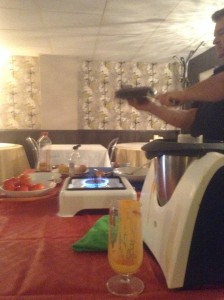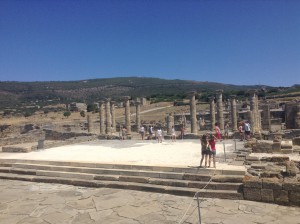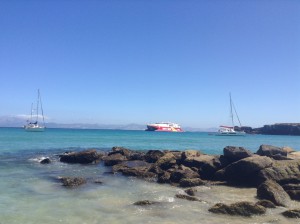“A Different Language is a Different Vision of Life” (quote by Federico Fellini)
By Mariam Taha
It is hard to believe there is only one week left of our trip in Spain. Looking back, I feel like I have improved greatly upon my Spanish, specifically when it comes to speaking. I arrived knowing that the biggest thing I wanted to work on and improve was my speaking and pronunciation. I have now experienced, and I confirm, that studying abroad is the best way to learn a language. Here in Spain, we are completely immersed in the language, while we are at home with our host families, at school, site-seeing, or on the streets speaking with locals.
People from other parts of the world or even other parts of Spain have claimed that it can be difficult to understand when people from Southern Spain speak Spanish, but I have not encountered any difficulties. I can definitely hear and recognize the Cádiz accent, but I have no problem understanding people when they speak. The only thing I need to work on is understanding native Spanish speakers when they begin to speak very fast, no matter where they are from.
Our classes here are very discussion and conversation-based, which makes sense considering listening and speaking are two of the biggest aspects of a language. The classroom setting is a great place to practice because there are students of all different levels and we can help each other without feeling awkward or uncomfortable (as some may feel while speaking in public with a local). It is also nice to have the professor there to help us and correct us when necessary. We get to practice speaking about so many different topics, therefore practicing using new vocabulary and grammar all the time.
I feel like I got the most practice speaking Spanish at our meals with my host mom, Pacquita. We would eat lunch or dinner and end up just sitting there and talking for a long time. I would talk about my classes and various experiences in Cádiz, and she would talk about her past and her life as it is now. She is a very interesting, kind, sweet person and I am so lucky to have had her as my host mother in Spain. We can understand each other very well when we speak and she also makes sure I understand what she is saying and will explain it using other words if needed.
I am so glad I have had this experience because now I feel much more confident in my second language. I truly love the language and I think learning a new language is so much fun. This is happening at such a great time too because I am about to get started in the health field, where knowing Spanish will certainly be useful. I unquestionably recommend studying abroad in a foreign country to anyone wishing to learn a new language, or improve upon one they have already studied.















